Abstract
The diamine putrescine, the triamine spermidine, and the tetramine spermine are ubiquitous in plant cells, while other polyamines are of more limited occurrence. Their chemistry and pathways of biosynthesis and metabolism are well characterized. They occur in the free form as cations, but are often conjugated to small molecules like phenolic acids and also to various macromolecules. Their titer varies from approximately micromolar to more than millimolar, and depends greatly on environmental conditions, especially stress. In cereals, the activity of one of the major polyamine biosynthetic enzymes, arginine decarboxylase, is rapidly and dramatically increased by almost every studied external stress, leading to 50-fold or greater increases in putrescine titer within a few hours. The physiological significance of this increase is not yet clear, although most recent work suggests an adaptive, protective role. Polyamines produced through the action of ornithine decarboxylase, by contrast, seem essential for DNA replication and cell division. The application of exogenous polyamines produces effects on patterns of senescence and morphogenesis, suggesting but not proving a regulatory role for polyamines in these processes. The evidence for such a regulatory role is growing.
Full text
PDF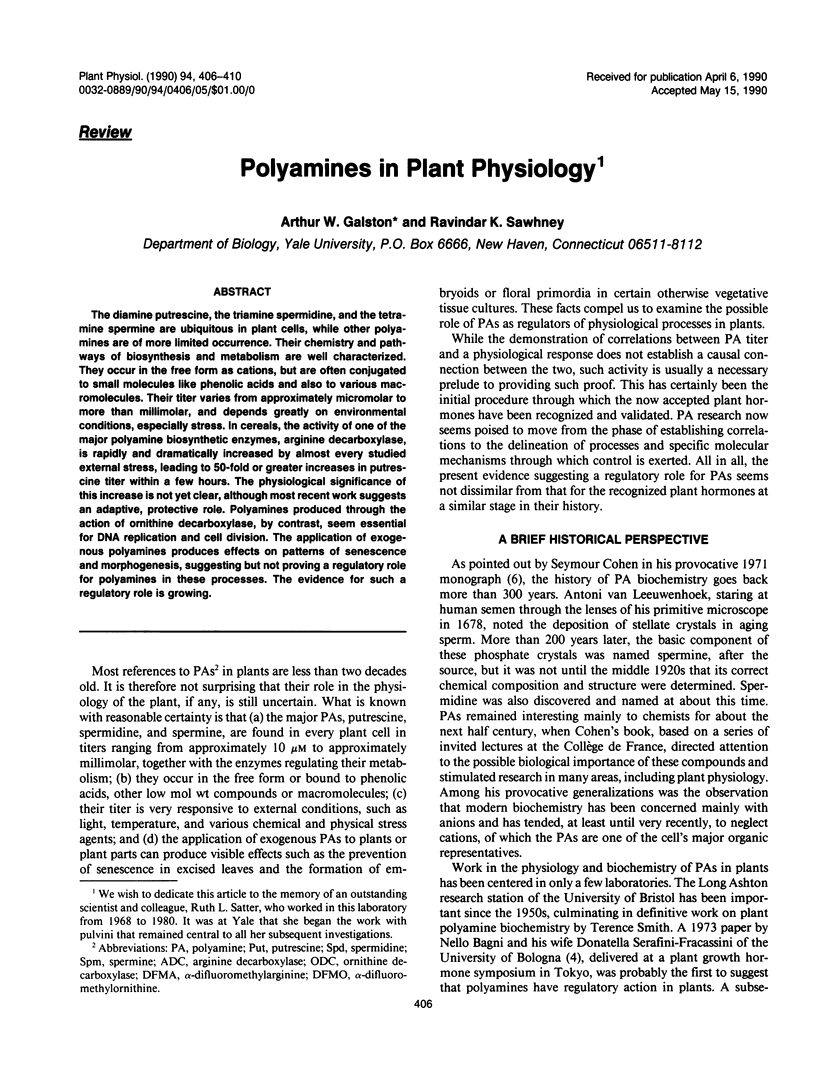
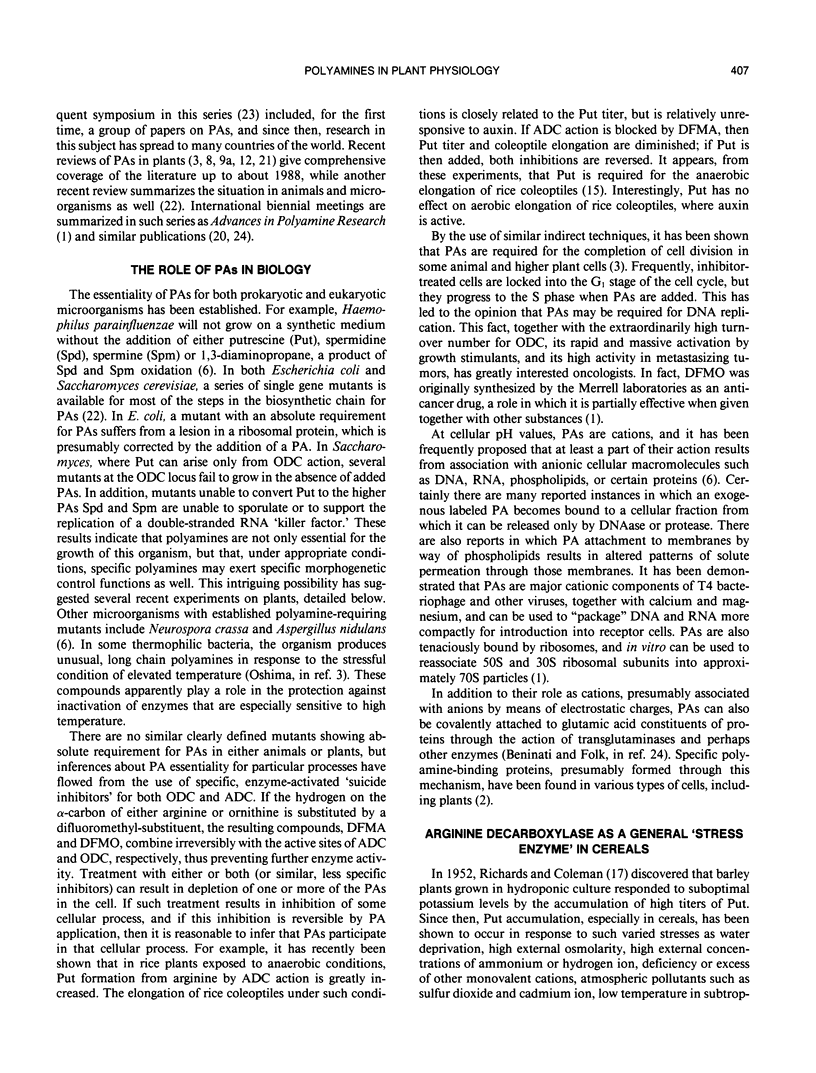
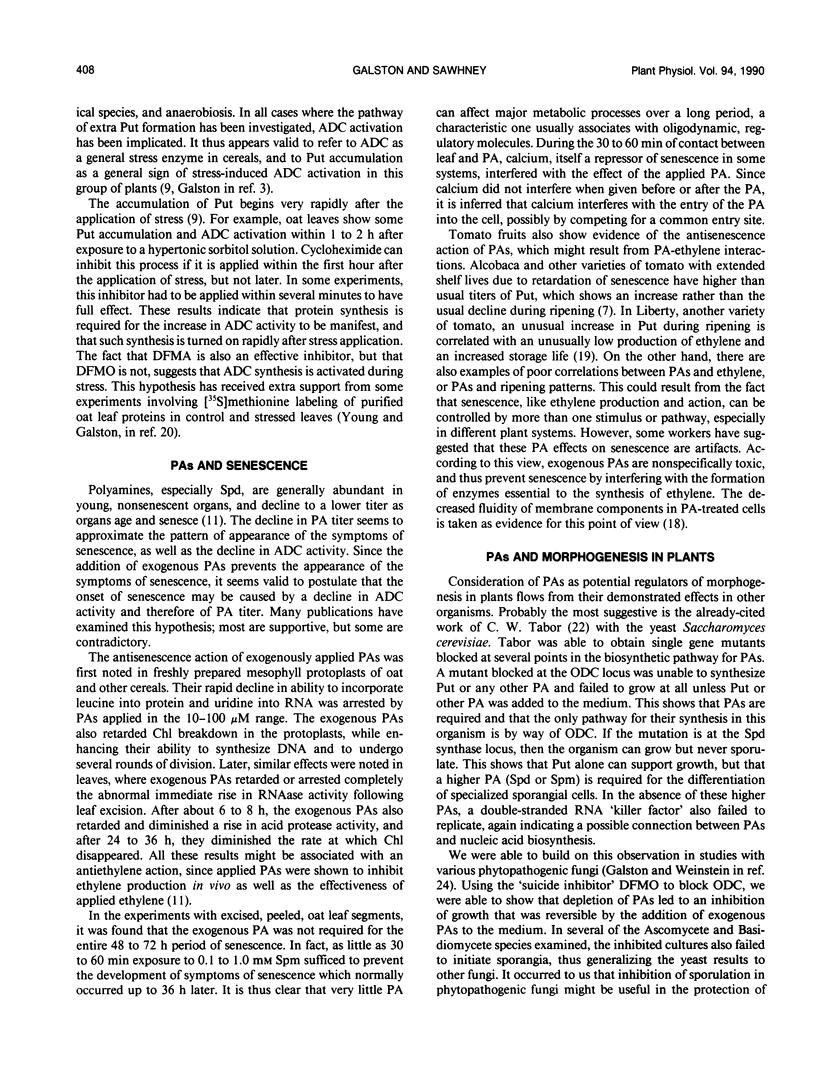
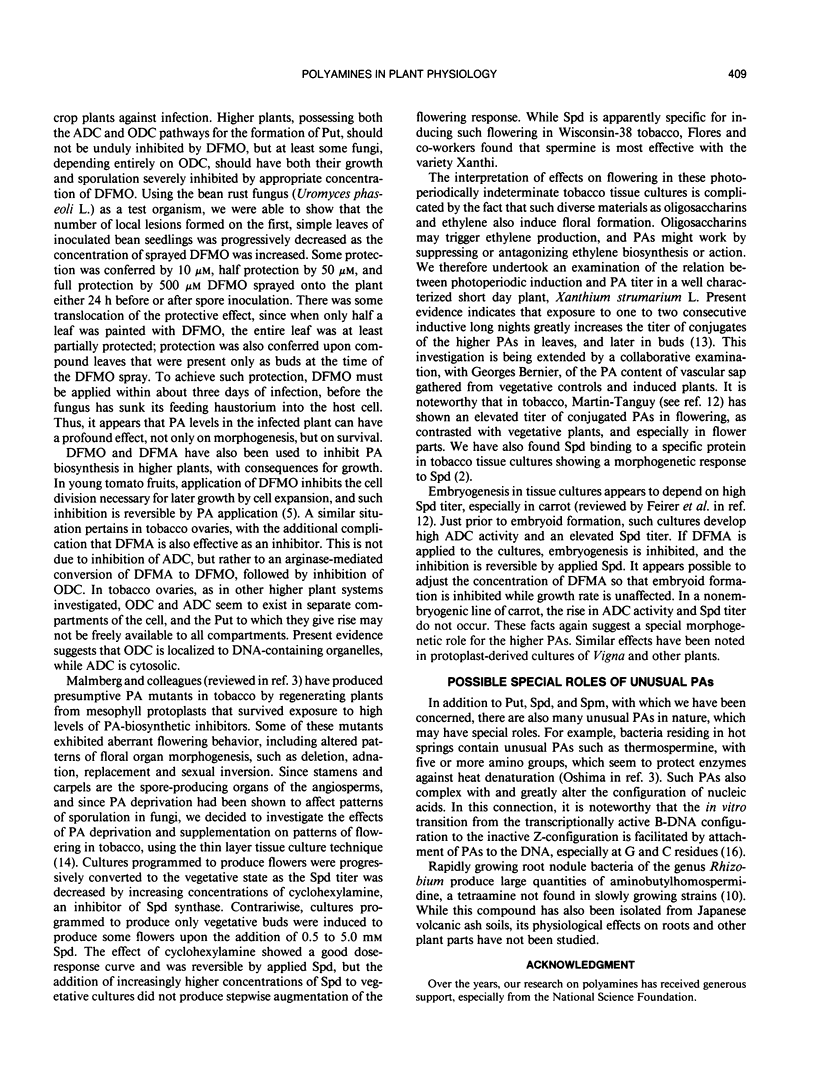
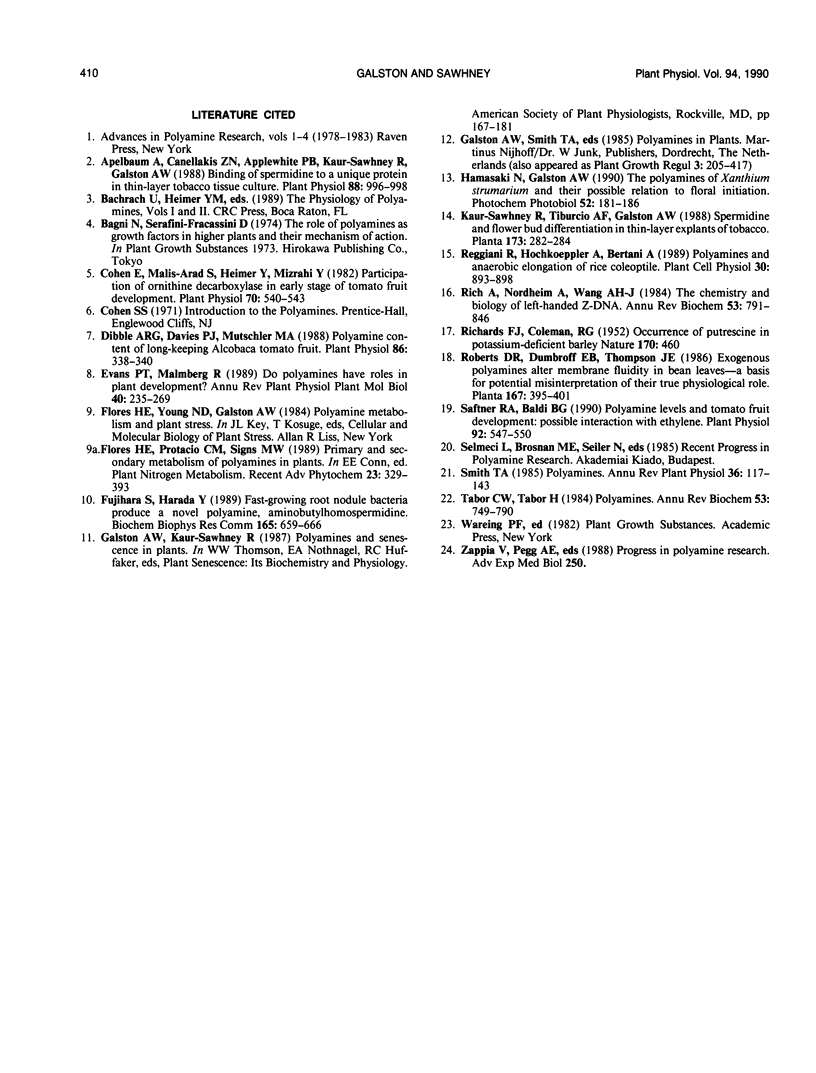
Selected References
These references are in PubMed. This may not be the complete list of references from this article.
- Apelbaum A., Canellakis Z. N., Applewhite P. B., Kaur-Sawhney R., Galston A. W. Binding of spermidine to a unique protein in thin-layer tobacco tissue culture. Plant Physiol. 1988;88:996–998. doi: 10.1104/pp.88.4.996. [DOI] [PMC free article] [PubMed] [Google Scholar]
- Cohen E., Arad S. M., Heimer Y. M., Mizrahi Y. Participation of ornithine decarboxylase in early stages of tomato fruit development. Plant Physiol. 1982 Aug;70(2):540–543. doi: 10.1104/pp.70.2.540. [DOI] [PMC free article] [PubMed] [Google Scholar]
- Dibble A. R., Davies P. J., Mutschler M. A. Polyamine content of long-keeping alcobaca tomato fruit. Plant Physiol. 1988 Feb;86(2):338–340. doi: 10.1104/pp.86.2.338. [DOI] [PMC free article] [PubMed] [Google Scholar]
- Fujihara S., Harada Y. Fast-growing root nodule bacteria produce a novel polyamine, aminobutylhomospermidine. Biochem Biophys Res Commun. 1989 Dec 15;165(2):659–666. doi: 10.1016/s0006-291x(89)80016-6. [DOI] [PubMed] [Google Scholar]
- Hamasaki N., Galston A. W. The polyamines of Xanthium strumarium and their response to photoperiod. Photochem Photobiol. 1990;52(1):181–186. doi: 10.1111/j.1751-1097.1990.tb01772.x. [DOI] [PubMed] [Google Scholar]
- RICHARDS F. J., COLEMAN R. G. Occurrence of putrescine in potassium-deficient barley. Nature. 1952 Sep 13;170(4324):460–460. doi: 10.1038/170460a0. [DOI] [PubMed] [Google Scholar]
- Rich A., Nordheim A., Wang A. H. The chemistry and biology of left-handed Z-DNA. Annu Rev Biochem. 1984;53:791–846. doi: 10.1146/annurev.bi.53.070184.004043. [DOI] [PubMed] [Google Scholar]
- Saftner R. A., Baldi B. G. Polyamine levels and tomato fruit development: possible interaction with ethylene. Plant Physiol. 1990 Feb;92(2):547–550. doi: 10.1104/pp.92.2.547. [DOI] [PMC free article] [PubMed] [Google Scholar]
- Tabor C. W., Tabor H. Polyamines. Annu Rev Biochem. 1984;53:749–790. doi: 10.1146/annurev.bi.53.070184.003533. [DOI] [PubMed] [Google Scholar]


